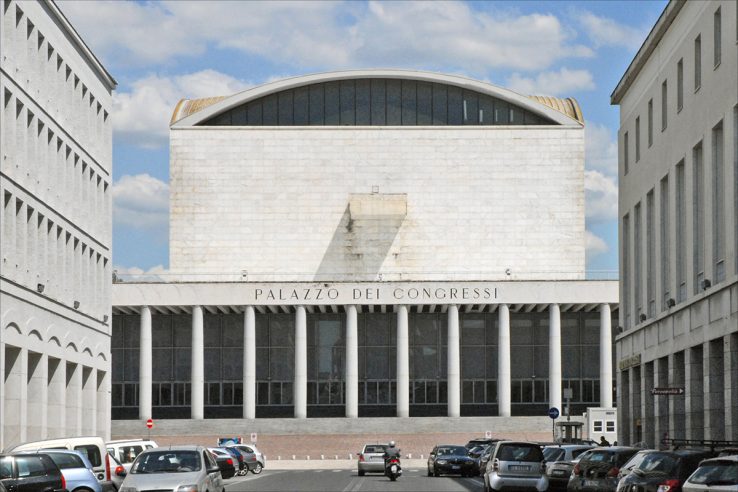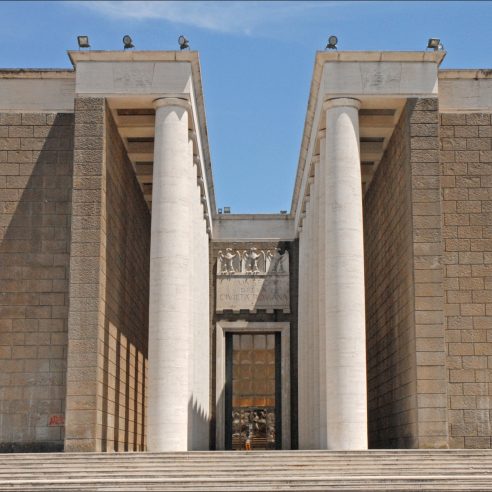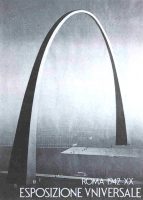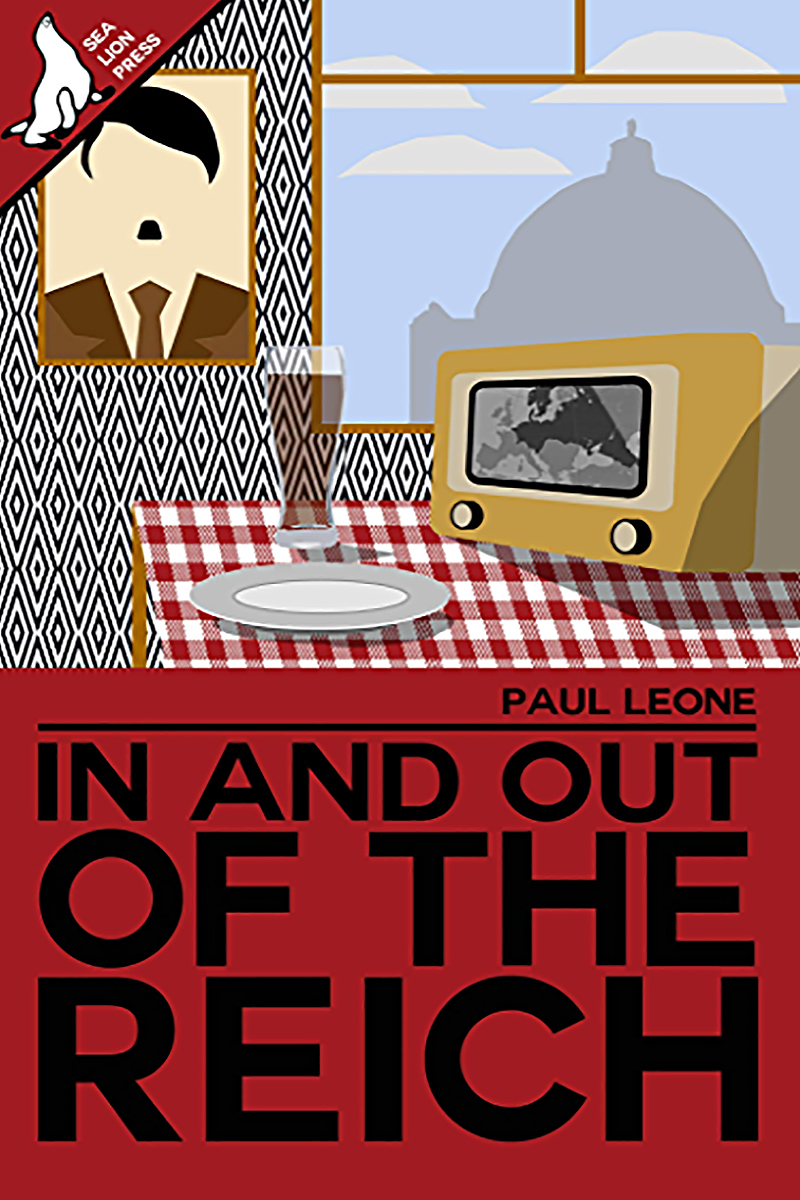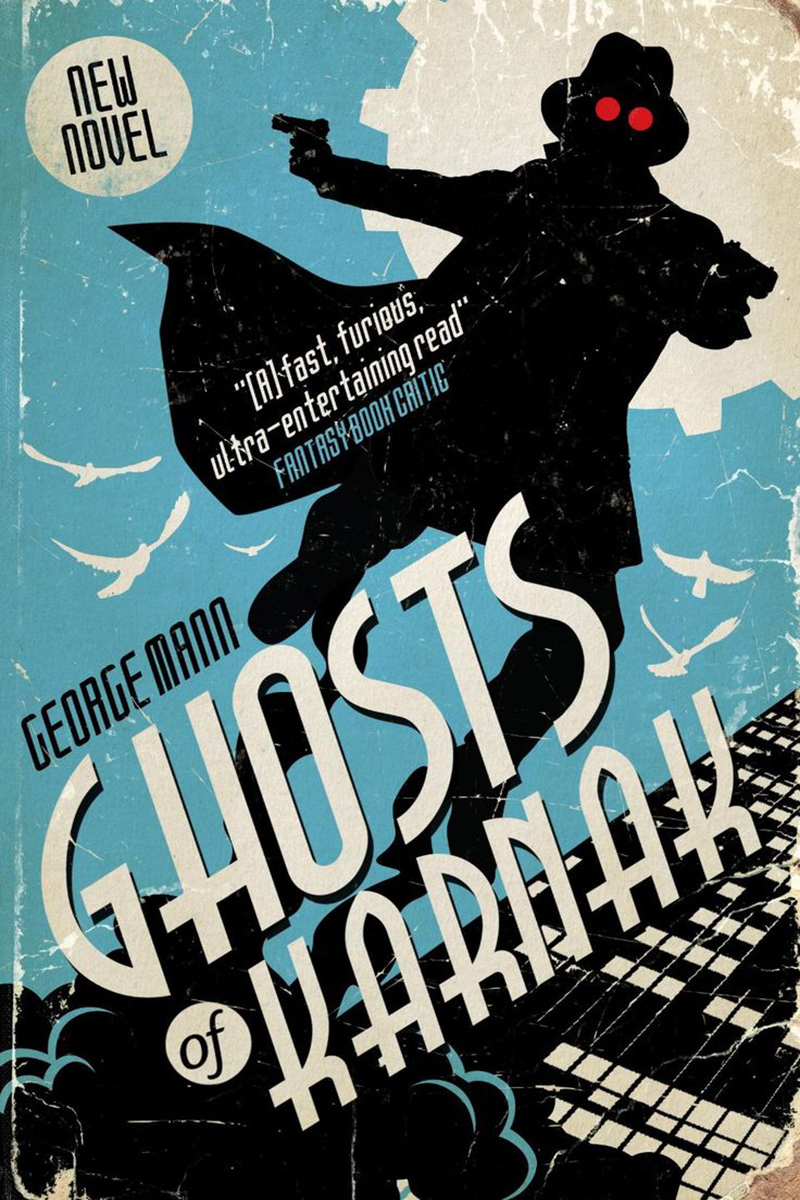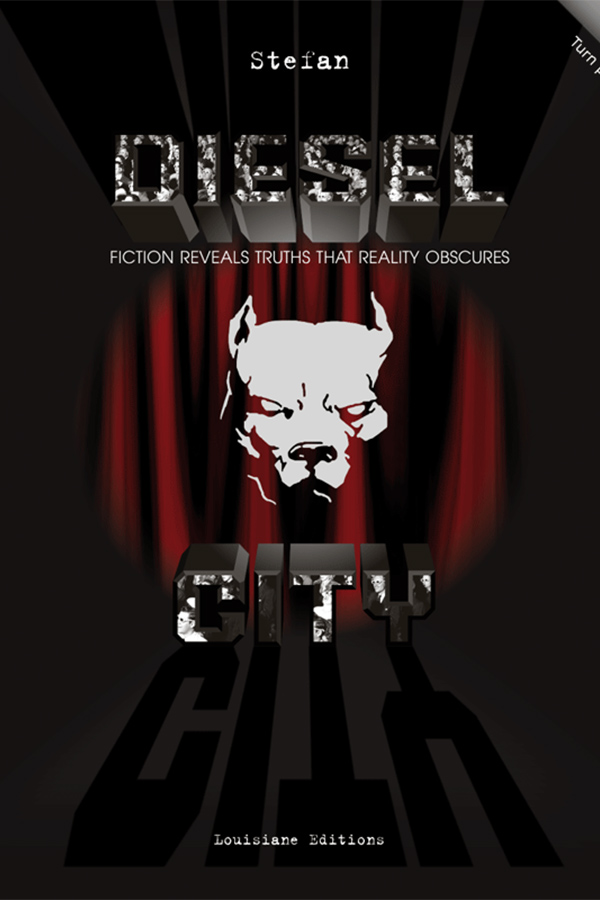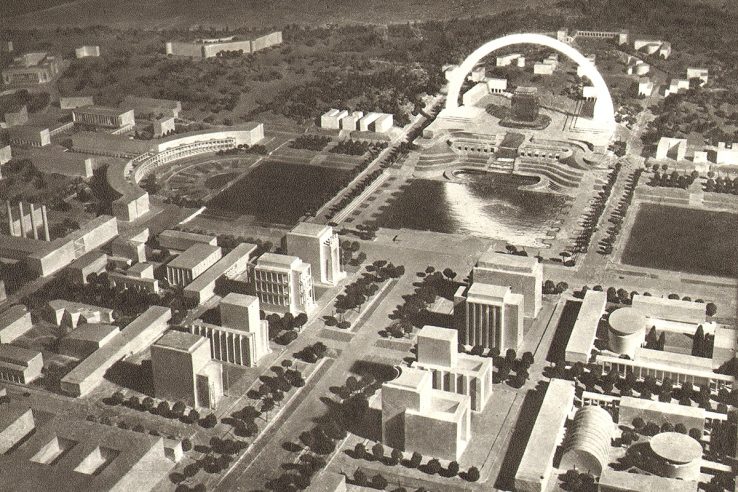
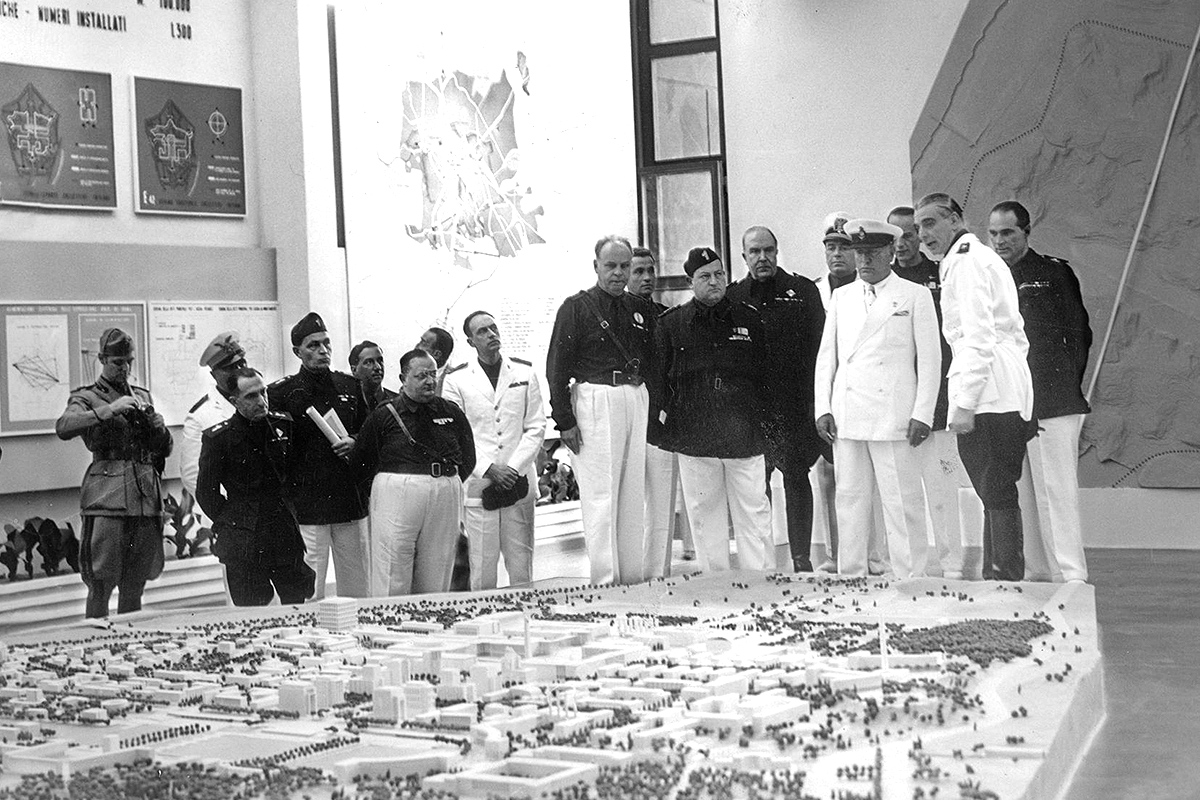
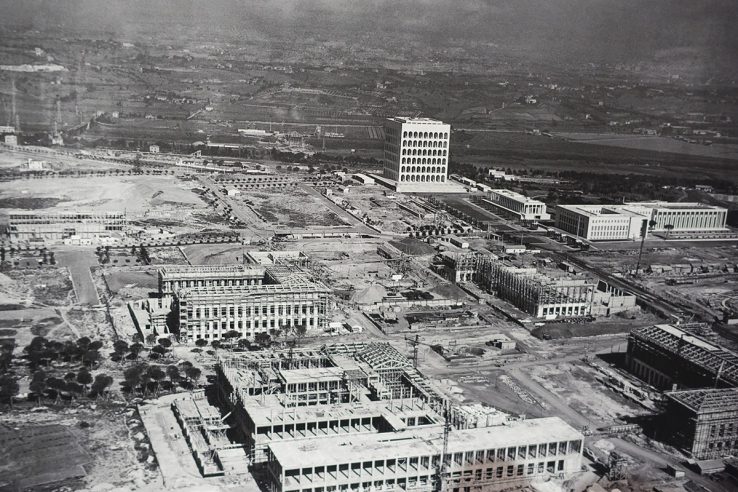
The 1942 World’s Fair in Rome was an opportunity for Benito Mussolini to celebrate twenty years of Fascism and show to the world what progress Italy had made.
The fair never happened. World War II did. But Mussolini still built a complex for the Esposizione Universale Roma (EUR).
The project was directed by Marcello Piacentini, who had designed the new campus of Rome University in 1935 and become a leading theorist of Fascist architecture. The neighborhood incorporated elements of Roman Imperial town planning and Italian Rationalist architecture, resulting in a simplified neoclassicism.
The postwar Italian government decided to convert the unfinished EUR into a business district. Fascist-era buildings that were already under construction were completed. Additional buildings were added in contemporary styles.
Palazzo della Civiltà Italiana
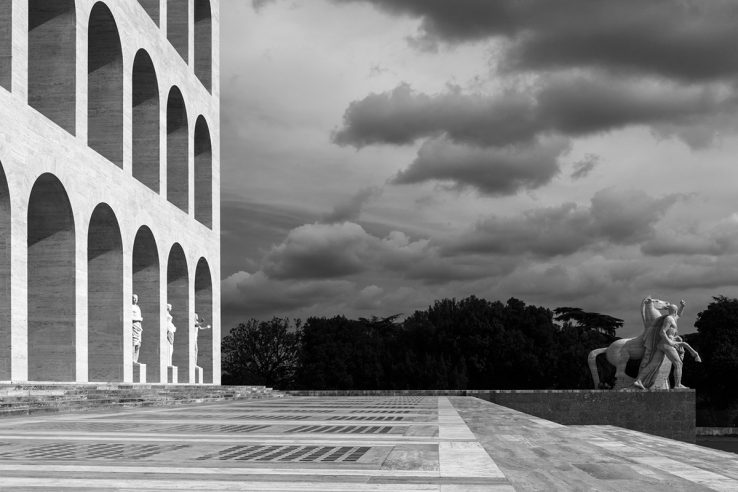
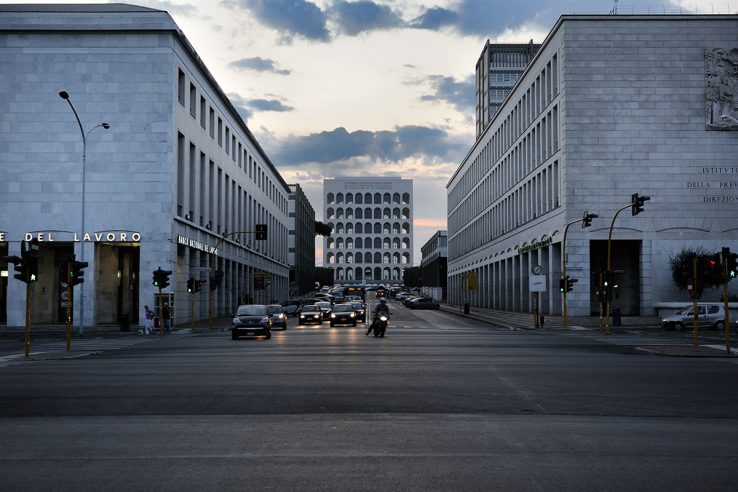
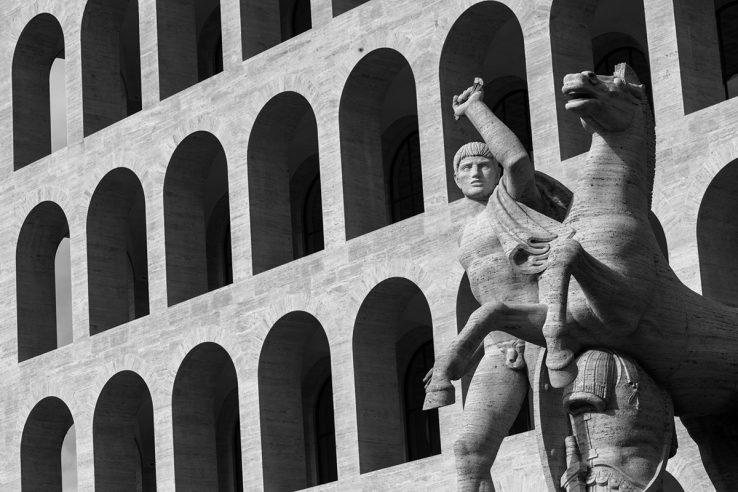
The Palace of Italian Civilization is the centerpiece of the EUR. Designed by three architects, Giovanni Guerrini, Ernesto Bruno Lapadula and Mario Romano, it was completed before the outbreak of World War II and is considered an icon of Fascist architecture.
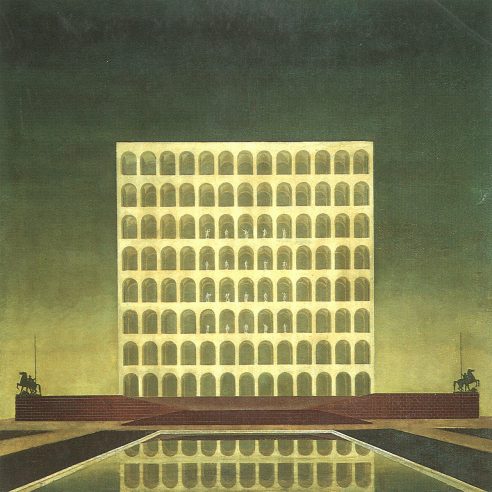

When the 1942 World’s Fair was canceled, the palace stood empty for a decade. It hosted its first exhibition in 1953. A restoration was carried out between 2003 and 2008. The luxury fashion label Fendi currently rents the building from municipal authorities to use it as its headquarters. The ground floor still occasionally hosts exhibitions.
Palazzo dei Congressi
Construction on Adalberto Libera’s Congress Palace started in 1938 but was suspended during the war. The building was completed in 1954. It still hosts conferences today.
Museo della Civiltà Romana
The Museum of Roman Civilization shares a building complex with the Planetarium and Astronomical Museum of Rome. A columnated passageway connects the two buildings.
The museum’s most famous exhibit is a scale model of Ancient Rome that took almost forty years to complete.
Arch
A monumental arch was meant to mark the southern end of the EUR. Proposals were made for an arch of concrete as well as one of steel before Vittorio Cini, who served as general commissioner for the EUR, announced in 1939 it would be made from aluminium. It was also reduced in size: from as wide as 600 meters to 330.
A favorite of Mussolini’s, the arch became a staple of advertisements for the aborted World’s Fair. It was never built.
Auditorium
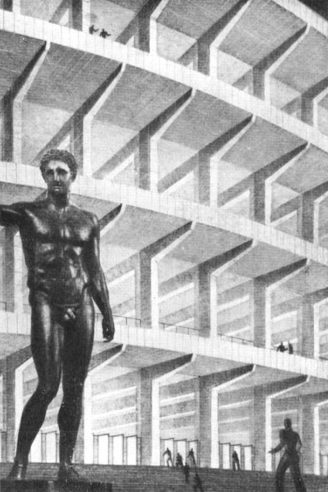
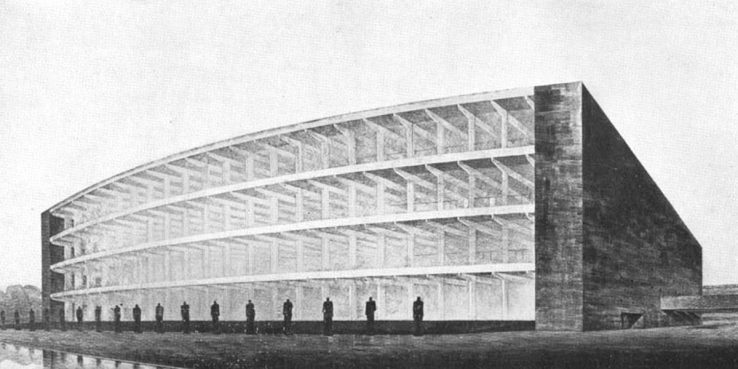
Also unbuilt was an auditorium on the eastern end of Circus Maximus in old Rome. The architects Mario De Renzi, Adalberto Libera and Giuseppe Vaccaro submitted this proposal in 1935, which mixed classical with modern styles.

Palanti Tower
Mario Palanti’s proposal to build the world’s tallest tower in Rome preceded the EUR, but who knows? Maybe he could have convinced Mussolini in a world where the Axis powers won the Second World War.
The Italian-born Palanti designed some of the most distinctive buildings of Buenos Aires, Argentina, including the Palacio Barolo, which, at 100 meters, was the tallest building in South America when it was completed in 1923.
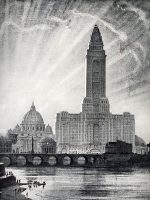
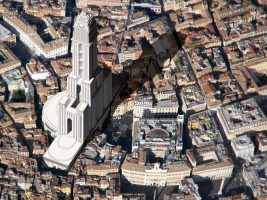
Two years later, Popular Mechanics reported that Palanti had pitched a 335-meter-high skyscraper to the dictator of Italy. The tower, built smack in the middle of old Rome, would house everything from gymnasiums to theaters.
It provoked a storm of criticism from artists and architects, who, according to Popular Mechanics, complained that the grandeur of the ruins of ancient Rome would be dwarfed and spoiled by such a structure.

